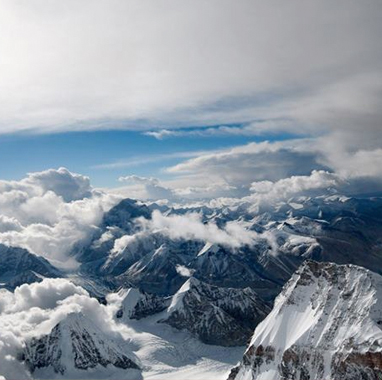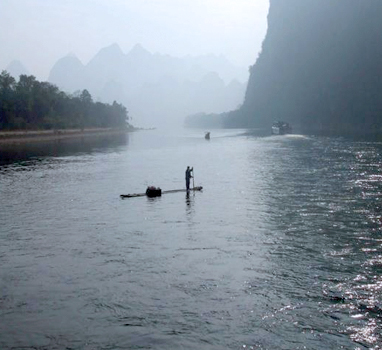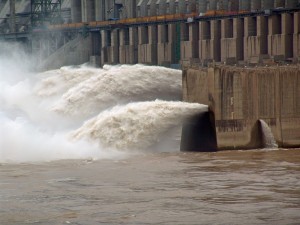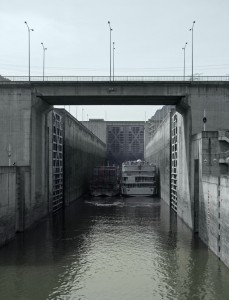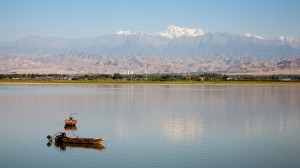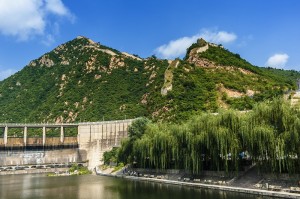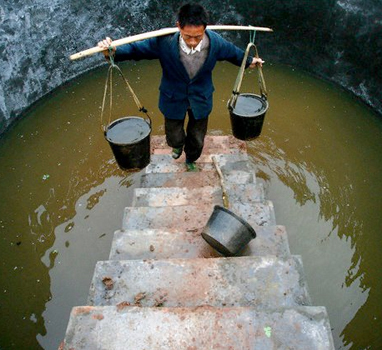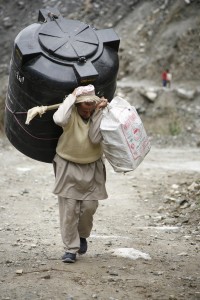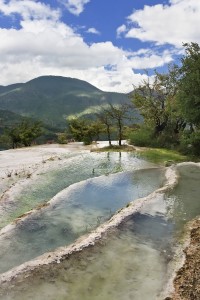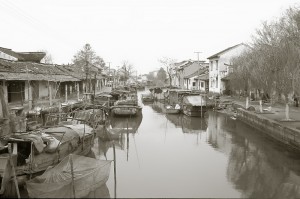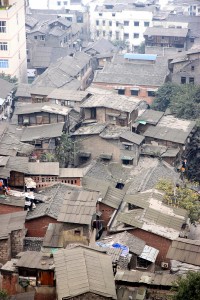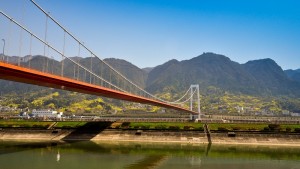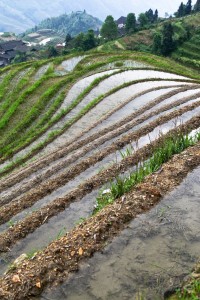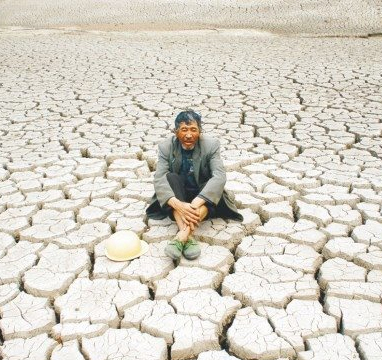The Tibet Issue
Introduction
To many in the West, China’s continued rule in Tibet is often considered to be a foreign occupation, though few inside China accept this point of view. Tibet is of great psychological importance to China and to Chinese people in terms of national identity and the maintenance of Chinese national unity, as well as of enormous strategic importance with regard to China’s traditional national security and its access to water and other vital natural resources.
Geography
The Tibetan Plateau is the highest region on the planet, sometimes referred to as “the roof of the world”. With an average elevation of more than 4500 meters, it is an
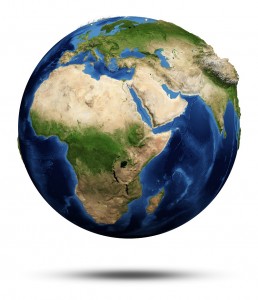 inhospitable place to plant and animal life alike and frequently leaves unaccustomed visitors gasping for air. It is home to one half of the world’s highest mountains, including Mount Everest or Qomolangma as the Tibetans call it, with the peak forming the border with Nepal. Tibet is also the source of many of Asia’s major rivers, including China’s two biggest, the Yangtze and the Yellow River, as well as the Brahmaputra, the Salween, the Mekong, the Irrawaddi, the Arun, the Karnali, the Sutlej and the Indus. About 90% flows downstream to China, India, Bangladesh, Nepal, Pakistan, Thailand, Myanmar, Laos, Cambodia and Vietnam. The sources of these rivers are the huge glaciers that exist in the Tibetan mountains, effectively forming enormous frozen reservoirs that are gradually released to flow down river. The constant flow of these rivers creates a stable source of water in regions which are otherwise dominated by monsoon rain falls. The Tibetan rivers are thus extremely important to sustaining life throughout South and Southeast Asia.
inhospitable place to plant and animal life alike and frequently leaves unaccustomed visitors gasping for air. It is home to one half of the world’s highest mountains, including Mount Everest or Qomolangma as the Tibetans call it, with the peak forming the border with Nepal. Tibet is also the source of many of Asia’s major rivers, including China’s two biggest, the Yangtze and the Yellow River, as well as the Brahmaputra, the Salween, the Mekong, the Irrawaddi, the Arun, the Karnali, the Sutlej and the Indus. About 90% flows downstream to China, India, Bangladesh, Nepal, Pakistan, Thailand, Myanmar, Laos, Cambodia and Vietnam. The sources of these rivers are the huge glaciers that exist in the Tibetan mountains, effectively forming enormous frozen reservoirs that are gradually released to flow down river. The constant flow of these rivers creates a stable source of water in regions which are otherwise dominated by monsoon rain falls. The Tibetan rivers are thus extremely important to sustaining life throughout South and Southeast Asia.
The territory of Tibet is large, with the Tibetan Autonomous Region (TAR) spanning more than 1.2 million square kilometers. Historically, though, Tibet has often included the whole of Qinghai province, as well as the western sections of Sichuan, Gansu, and Yunnan, making it geographically almost the size of modern day India. These areas outside of the autonomous region maintain a strong Tibetan identity today and continue to be populated by mainly ethnic Tibetans. Indeed, many of the protests that have made the news in recent years have occurred outside of the autonomous region, predominantly in Sichuan. When the Dalai Lama speaks about Tibet, he’s referring to those parts of the plateau that were historically Tibetan and are primarily populated by Tibetans. When China refers to Tibet, it is normally referring solely to the TAR.
Demographics
Despite covering such a vast area Tibet’s population is relatively small. The harsh climate has dictated sparse population throughout its history and, even with advances of modern technology, this continues to be the case. The TAR has a population of just 3 million people, though the total Tibetan population of areas that have historically been within Tibet numbers around 6 million. Such small numbers in such huge areas make Tibet one of the most sparsely populated places on the planet, a striking contrast to the thronging cities of eastern China.
 Unlike the other autonomous regions in China, Tibet has maintained its ethnic identity throughout the history of the PRC; whereas the Uyghurs in Xinjiang, the Hui in Ningxia, the Mongols in Inner Mongolia, and the Zhuang in Guangxi all now account for less than half of the population in their respective areas, Tibetans still represent 92% of the population in their own autonomous region. This is, however, changing rapidly. The opening of the world’s highest railway connecting Qinghai to Lhasa – an impressive engineering feat that takes trains across mountain passes over 5200 meters high – has enabled a much greater flow of people into, and out of, the TAR. Han Chinese currently make up around 6% of the population, but that number is beginning to rise as the Chinese government encourages Han migration into the areas by providing incentives such as housing, business, and pension benefits. Indeed, It is estimated that Han Chinese now make up 50% of the population of the capital city, Lhasa, and the Chinese government is heavily investing in the city’s infrastructure to raise the city to modern Chinese standards. Beijing says that the Han economic migrants have temporarily come to Tibet in order to help modernize the area. Some Tibetans fear that China will use demographics as a way to more thoroughly integrate the region into China. Visitors to Lhasa are keenly aware of the division with the city almost literally split into two areas, one almost entirely Tibetan and the other almost entirely Han.
Unlike the other autonomous regions in China, Tibet has maintained its ethnic identity throughout the history of the PRC; whereas the Uyghurs in Xinjiang, the Hui in Ningxia, the Mongols in Inner Mongolia, and the Zhuang in Guangxi all now account for less than half of the population in their respective areas, Tibetans still represent 92% of the population in their own autonomous region. This is, however, changing rapidly. The opening of the world’s highest railway connecting Qinghai to Lhasa – an impressive engineering feat that takes trains across mountain passes over 5200 meters high – has enabled a much greater flow of people into, and out of, the TAR. Han Chinese currently make up around 6% of the population, but that number is beginning to rise as the Chinese government encourages Han migration into the areas by providing incentives such as housing, business, and pension benefits. Indeed, It is estimated that Han Chinese now make up 50% of the population of the capital city, Lhasa, and the Chinese government is heavily investing in the city’s infrastructure to raise the city to modern Chinese standards. Beijing says that the Han economic migrants have temporarily come to Tibet in order to help modernize the area. Some Tibetans fear that China will use demographics as a way to more thoroughly integrate the region into China. Visitors to Lhasa are keenly aware of the division with the city almost literally split into two areas, one almost entirely Tibetan and the other almost entirely Han.
Tibet remains overwhelmingly Buddhist, though the influence of Tibet’s native religion, Bon, can still be seen in some of the practices. Although the much of Tibetan monastic heritage was destroyed during the Cultural Revolution, Tibet still remains home to many large and small Buddhist monasteries and temples, with Tibetans making pilgrimages at various times of the year to sites of importance. The Jokhang Temple in Lhasa is the centerpiece of Tibetan Buddhism. It attracts tens of thousands of pilgrims yearly, particularly during the winter months when some Tibetans from rural areas may walk hundreds of miles to pay homage by prostrating themselves around the perimeter.
The Tibetan Economy
China currently invests about $2.5 billion annually in the region, primarily in the form of 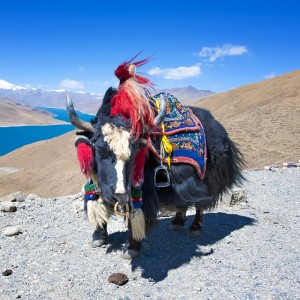 infrastructure projects. Farming, forestry, animal husbandry and fishery accounted for approximately 70% of the total gross output value in 2000. Because of its high altitude and mountainous conditions, the Tibetan growing season is short, and the main crops grown are barley, wheat, buckwheat, rye, potatoes and some fruits and vegetables. Sheep, cattle, goats, camels, yaks and horses are also raised within Tibet, with the yak being particularly well suited to Tibet’s harsh winter conditions. Most of the farming, animal husbandry and forestry is still done by hand or with animal labor. Increasingly, electric and hydro-power, mining, light industry and handicrafts also generating earnings for the region. Tibetan hats, jewellery, wooden items, clothing, quilts, fabrics and carpets are all important money earners, as is tourism, with most tourists staying in Lhasa, Shigatse, and the Mount Everest base camp, though the number of foreign tourists permitted to visit Tibet has been scaled back in recent years. Tibet also has large deposits of gold, copper, salt and radioactive ores, although its lack of infrastructure to date has meant that it has been difficult to extract these minerals. China’s huge investment in infrastructure should mean that mining will be a growing sector for Tibet in the future. Overall, China’s significant investment in the region has meant that many Tibetans have seen a rise in living standards. Annual per capita income, for instance, quadrupled to $1076 between 1986 and 2006, though there are claims that this benefit is felt primarily by Han Chinese migrants and not by the indigenous population. Unemployment remains high at approximately 10.3%, more than double the national urban rate.
infrastructure projects. Farming, forestry, animal husbandry and fishery accounted for approximately 70% of the total gross output value in 2000. Because of its high altitude and mountainous conditions, the Tibetan growing season is short, and the main crops grown are barley, wheat, buckwheat, rye, potatoes and some fruits and vegetables. Sheep, cattle, goats, camels, yaks and horses are also raised within Tibet, with the yak being particularly well suited to Tibet’s harsh winter conditions. Most of the farming, animal husbandry and forestry is still done by hand or with animal labor. Increasingly, electric and hydro-power, mining, light industry and handicrafts also generating earnings for the region. Tibetan hats, jewellery, wooden items, clothing, quilts, fabrics and carpets are all important money earners, as is tourism, with most tourists staying in Lhasa, Shigatse, and the Mount Everest base camp, though the number of foreign tourists permitted to visit Tibet has been scaled back in recent years. Tibet also has large deposits of gold, copper, salt and radioactive ores, although its lack of infrastructure to date has meant that it has been difficult to extract these minerals. China’s huge investment in infrastructure should mean that mining will be a growing sector for Tibet in the future. Overall, China’s significant investment in the region has meant that many Tibetans have seen a rise in living standards. Annual per capita income, for instance, quadrupled to $1076 between 1986 and 2006, though there are claims that this benefit is felt primarily by Han Chinese migrants and not by the indigenous population. Unemployment remains high at approximately 10.3%, more than double the national urban rate.
The Historical Argument
The Tibetan empire reached its zenith around the 8th century CE with an empire that encompassed parts of Southeast Asia, Central Asia, northern India, Nepal, Bhutan, Bangladesh and also parts of what are now the Chinese provinces of Qinghai, Yunnan, Gansu and Sichuan in China. During the Tang dynasty in around 640 CE the Chinese princess Wencheng was sent to Lhasa to marry the then Tibetan emperor Songtsan Gampo. Many Chinese academics credit this as the first sign of China’s suzerainty over Tibet, though many Tibetans claim the opposite: that this was a sign of Tibet’s power and independence since the Emperor only acquiesced in sending the princess under threat of force from Tibet (a claim which is not accepted by modern Chinese historians and was not recorded in the Chinese written Tang annals). Contemporaneously, an informal treaty was signed between the two countries in which the Tibetans claim that the Chinese recognized Tibet as equal to China. By 821 a formal peace treaty was agreed and signed between Tibet and China, known as the Tang-Tibetan Alliance, and the details of this were inscribed on a stone pillar outside of the Jokhang Temple in Lhasa in both Tibetan and Chinese. This pillar remains in place today.
 The 13th century Mongol subjugation of Eurasia brought Tibet and China under one rule for the first time when both countries became subject nations under the Mongol empire. Having conquered China, Kublai Khan consolidated his rule by proclaiming himself the Emperor of the Yuan Dynasty. Despite the Yuan Dynasty being formed as a result of an invasion from an external force, Kublai Khan is considered in China to have been Chinese as he perpetuated China’s cultural heritage. That he was Mongolian is no barrier to this interpretation, as Mongolians are recognized as one of China’s official 56 ethnic groups. As a result, modern Chinese historians argue that it was during the Yuan Dynasty that Tibet formally became part of Chinese territory and has remained so ever since. In contrast, the opponents of this view maintain that China and Tibet were two independent countries subjugated by an outside force; in emphasis, they point out the Mongols ruled the two territories separately much in the same way that the British ruled its colonies independently, and that Tibetan life remained centered on monastic Buddhism rather than Chinese cultural norms. Tibet continued to move in and out of the Chinese sphere of influence throughout the Ming and Qing dynasties that followed the Yuan, leading up to the end of the 19th century.
The 13th century Mongol subjugation of Eurasia brought Tibet and China under one rule for the first time when both countries became subject nations under the Mongol empire. Having conquered China, Kublai Khan consolidated his rule by proclaiming himself the Emperor of the Yuan Dynasty. Despite the Yuan Dynasty being formed as a result of an invasion from an external force, Kublai Khan is considered in China to have been Chinese as he perpetuated China’s cultural heritage. That he was Mongolian is no barrier to this interpretation, as Mongolians are recognized as one of China’s official 56 ethnic groups. As a result, modern Chinese historians argue that it was during the Yuan Dynasty that Tibet formally became part of Chinese territory and has remained so ever since. In contrast, the opponents of this view maintain that China and Tibet were two independent countries subjugated by an outside force; in emphasis, they point out the Mongols ruled the two territories separately much in the same way that the British ruled its colonies independently, and that Tibetan life remained centered on monastic Buddhism rather than Chinese cultural norms. Tibet continued to move in and out of the Chinese sphere of influence throughout the Ming and Qing dynasties that followed the Yuan, leading up to the end of the 19th century.
The 13th Dalai Lama entered a rapidly changing international order when he assumed power from his regent in 1895, by which time both Tibet and the Qing were under pressure from predatory Japanese and European colonial powers. By 1890 the British were negotiating a treaty with the Qing to establish the border between Tibet and Sikkim, which the British sought to include within its Indian colony. Historically, the Himalayan kingdom of Sikkim had been viewed as a vassal tributary state by Tibet, yet the Tibetans were not consulted during the treaty negotiations. Mainly as a result of fear that Russia was making incursions into Tibet in order to establish a sphere of influence, Britain invaded Tibet in 1904 and the 13th Dalai Lama fled into exile. The British invasion of Tibet refocused Qing attention on the region, which had been distracted by challenges closer to home. By December 1904, Tibetan officials left in charge by the 13th Dalai Lama, capitulated to British terms in order to secure withdrawal of troops from Lhasa. In the resulting convention between Great Britain and Tibet, Tibet accepted London’s annexation of Sikkim and agreed not to conduct for relations with foreign states, including China. Tibet also had to pay war reparations.
During this time, the thirteenth Dalai Lama was trying to get Russia to engage on Tibet’s 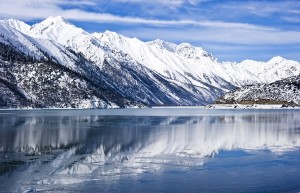 behalf, yet Russian help was not forthcoming. Ultimately it suited both the British and Russians that Tibet was neither an independent state nor a vassal of an enemy. London and Moscow concluded that it was in both their interests to recognize a purposely vague Chinese claim over Tibet, especially as the British realized that it would be too expensive to turn Tibet into a true British protectorate as it had done to Sikkim. As a result, some clauses of the 1904 Convention were rejected by the Foreign Office in London, and it negotiated two new treaties with the Qing and with Russia. In a 1906 treaty with the Qing, the government of Great Britain engaged not to annex Tibetan territory or to interfere in the administration of Tibet. The Qing undertook to prevent other foreign states from interfering with the territory or internal administration of Tibet. The British then signed a second 1907 accord with Russia in which the two states agreed to recognize the principle of Chinese suzerainty over Tibet, thus effectively denying that Tibet was an independent nation. Moreover, English legal and historical documents were beginning to equate China with all the territory of the Qing empire. At the same time, as those Han Chinese that sought to end imperial rule began to think what a Chinese nation would be once the Manchus were overthrown, they too began to define their borders by those drawn by the Manchus when they took power. The Chinese became fixated on the humiliation that they were experiencing at the hands of foreign powers so the defense of Chinese borders became a matter of national pride for the Chinese people. By 1912, a year after the overthrow of the Qing Dynasty and the formation of the Republic of China, San Yatsen declared China to be a multi-ethnic state composed of Manchus, Mongols, Tibetans, Han and Uyghurs among others. Promoting this diverse population was one of the ways that the young republic articulated that its aim was to consolidate its country upon the larger Qing borders.
behalf, yet Russian help was not forthcoming. Ultimately it suited both the British and Russians that Tibet was neither an independent state nor a vassal of an enemy. London and Moscow concluded that it was in both their interests to recognize a purposely vague Chinese claim over Tibet, especially as the British realized that it would be too expensive to turn Tibet into a true British protectorate as it had done to Sikkim. As a result, some clauses of the 1904 Convention were rejected by the Foreign Office in London, and it negotiated two new treaties with the Qing and with Russia. In a 1906 treaty with the Qing, the government of Great Britain engaged not to annex Tibetan territory or to interfere in the administration of Tibet. The Qing undertook to prevent other foreign states from interfering with the territory or internal administration of Tibet. The British then signed a second 1907 accord with Russia in which the two states agreed to recognize the principle of Chinese suzerainty over Tibet, thus effectively denying that Tibet was an independent nation. Moreover, English legal and historical documents were beginning to equate China with all the territory of the Qing empire. At the same time, as those Han Chinese that sought to end imperial rule began to think what a Chinese nation would be once the Manchus were overthrown, they too began to define their borders by those drawn by the Manchus when they took power. The Chinese became fixated on the humiliation that they were experiencing at the hands of foreign powers so the defense of Chinese borders became a matter of national pride for the Chinese people. By 1912, a year after the overthrow of the Qing Dynasty and the formation of the Republic of China, San Yatsen declared China to be a multi-ethnic state composed of Manchus, Mongols, Tibetans, Han and Uyghurs among others. Promoting this diverse population was one of the ways that the young republic articulated that its aim was to consolidate its country upon the larger Qing borders.
Taking advantage of the chaos during the early days of the Republic of China, in 1912 the 13th Dalai Lama proclaimed Tibet’s complete independence, and a voluntary Tibetan army drove the remaining Chinese out of the Tibet. In 1913, the Dalai Lama returned from exile after an absence of eight years. Importantly, the Tibetan government also negotiated with British India over shared borders and an agreement was signed between British India and Tibet in 1912 which ceded Tibetan territory to colonial India. This is often cited as proof that Tibet acted with genuine independence as a nation state at this time, but it is the only example of Tibet ever acting as such in the modern international system. It is worth noting that Chinese authorities were included in these negotiations and the Chinese representative even initialed the final treaty. Though this is now downplayed by Beijing due to the complications of continued disputes with India over the modern border, it does raise a serious question over the ability of Tibet to act as a genuinely sovereign nation even during this sole example of it apparently doing so. Furthermore, Britain was in breach of its own Anglo-Russian Entente, signed in 1907, in which it had agreed that all matters surrounding Tibet would be dealt with through the authorities in Peking (Beijing) and that no negotiations would be conducted with Tibetan authorities. The chaos and confusion in China after the fall of the Qing left Tibet’s status relatively unaddressed. During this period, the 13th Dalai Lama passed away. Tibet’s 14th and current Dalai Lama was born on July 6, 1935, 18 months after the death of his predecessor.
Tibet under the PRC
During the struggle against Japanese occupation and the civil war between the communists and the nationalists, it is reported that Mao Zedong pledged that the periphery regions of China, such as Tibet, Xinjiang, and Outer Mongolia, would be free to decide their own future. However, upon the establishment of the PRC in 1949, this policy was repudiated (with the exception of Mongolia, whose independence was accepted by the communists probably as a favor to their allies in the Soviet Union). By 1949, the Chinese were using its radio infrastructure to broadcast into Tibet its need to peacefully liberate the country. By October 1950, the PLA had entered Tibet’s eastern regions. After initially rejecting the idea of Chinese sovereignty over Tibet, the Dalai Lama signed the “17 point agreement” in 1951 after recognizing that it was not in Tibet’s interests to make an enemy of its giant neighbour against which it stood little chance of military success. The Chinese army had already inflicted defeats against Tibetan resistance and it was clear that the battle could not be won. The agreement accorded the Tibetans autonomy over their own affairs, recognized the position of the Dalai Lama and guaranteed freedom of religion in Tibet. It needs to be acknowledged that this both demonstrates that the PRC government recognized the ability of the Tibetan authorities to act on behalf of Tibet (otherwise they would not have conducted negotiations and signed an agreement with them) and also that several of the points in the agreement have been broken by the PRC authorities, in particular the promise not to interfere with the position of the Dalai Lama and the guarantee that local religion would be respected.
The Dalai Lama remained in Tibet after this agreement was signed and, according to his own account of the story, met with Mao Zedong in Beijing on more than one occasion. In March 1959, following three years of sporadic battles at the edges of Tibet between local paramilitaries and the PLA, the Dalai Lama officially repudiated the agreement citing breaches from the Chinese. What followed was an uprising from Tibetans against the increasing Chinese presence in Tibet, followed by a large military response from the Chinese and a bloody wave of repression. The Dalai Lama fled, on horseback, across the Himalaya into India where he later claimed asylum and established the ‘Tibetan government in exile’ in Dharamsala. It took a further three years to fully establish Chinese control over Tibet. The number of Tibetans killed has never been independently verified but the Tibetan government in exile claims the figure to be in excess of 86,000. It is also believed that the US was involved in inspiring the uprising by engaging in training some of the Tibetan paramilitaries, a practice that continued for several years after the uprising was crushed.
Prior to China’s ‘liberation’ or ‘occupation’ (what it is called depends on one’s own viewpoint) there is no doubt that life in Tibet was a long way from the idealistic vision of a harmonious, peace-loving, and free society that some in the West tend to paint it as. Life expectancy was just 36 and the overwhelming majority of the population was illiterate. A majority of Tibetans were hereditary serfs of varying statuses, allowing the elite – including the religious leaders – to live a luxurious life on the backs of a poor, uneducated society that was structurally condemned to remain in poverty through the following generations. In essence, this was precisely what the international communist movement sought to bring to an end. Tibet had no roads, poor sanitation, and no monetary system. Until the 1960s, there were virtually no vehicles of any kind, motorized or otherwise. Punishment for various crimes was barbaric, including amputation of limbs and eye-gouging.
 However, whatever the rights and wrongs of the legal or moral claim that China may have over Tibet, there is no question that many Tibetans suffered both during the ‘liberation’ and after, particularly through forced collectivization and during the Cultural Revolution. In this latter period many temples were destroyed and monks forced to tend pigs, sometimes within the walls of their own religious institutions, a grievous insult. While it is important to keep such acts in context – the Cultural Revolution was a chaotic and unpleasant time for most people in China, regardless of ethnicity – it does not excuse such acts in the minds of Tibetans, and many continue to harbor ill feelings over this. Despite the orgy of destruction that ensued in the late 1960s, it is thought that the Potala Palace, the former winter home of the Dalai Lama and Tibet’s most famous symbol, was preserved at the behest of Zhou Enlai who recognized its significance.
However, whatever the rights and wrongs of the legal or moral claim that China may have over Tibet, there is no question that many Tibetans suffered both during the ‘liberation’ and after, particularly through forced collectivization and during the Cultural Revolution. In this latter period many temples were destroyed and monks forced to tend pigs, sometimes within the walls of their own religious institutions, a grievous insult. While it is important to keep such acts in context – the Cultural Revolution was a chaotic and unpleasant time for most people in China, regardless of ethnicity – it does not excuse such acts in the minds of Tibetans, and many continue to harbor ill feelings over this. Despite the orgy of destruction that ensued in the late 1960s, it is thought that the Potala Palace, the former winter home of the Dalai Lama and Tibet’s most famous symbol, was preserved at the behest of Zhou Enlai who recognized its significance.
The Dalai Lama has remained in exile since 1959 and has spearheaded a very public campaign for Tibetan autonomy, gaining much sympathy and support in Western countries and elsewhere, including in Japan. In 1989 another attempted uprising, marking the fortieth anniversary of Dalai’s flight from Tibet, was crushed on the orders of the then-Party Secretary of Tibet, Hu Jintao, who would later go on to become China’s president and supreme leader. During the incident around 400 Tibetans are believed to have been killed. This occurred just months before the Tiananmen Square incident but did not receive a similar level of coverage due to a lack of media presence on the plateau at the time. Later that year, the Dalai Lama was awarded the Nobel Peace Prize for his “consistent resistance to the use of violence in his people’s struggle to regain their liberty”. The award, and the celebrity endorsements that have continued to flow (the Hollywood actor Richard Gere is the most notable), have helped to keep the Dalai’s drive for “genuine autonomy” within the PRC in the headlines, at least in the West. He abandoned hopes of Tibetan statehood in 1979, though the PRC government continues to paint him as a “splittist” seeking to create a separate country, and maintains that Tibet can exist within the PRC to the chagrin of some of his followers who would prefer a cleaner separation.
The Panchen Lama, Tibet’s second most important spiritual leader who has the  responsibility of identifying the reincarnated Dalai Lama after his death, was arrested shortly after being confirmed as the current Dalai’s accepted choice in 1995. Aged just six years old at the time, Gedhun Choekyi Nyima was considered to be the world’s youngest political prisoner by many in the Tibetan movement. Beijing subsequently appointed their own choice of Panchen Lama, Gyancain Norbu, a somewhat difficult position for the CCP to explain given its strictly atheist constitution. Beijing’s Panchen Lama has never been accepted by the Dalai Lama and the campaign for the release of Gedhun Choekyi Nyima continues. He is reported to still be alive and living in Beijing under virtual house arrest and with an assumed identity. This complicates any future succession the Dalai Lama. Under the system in place in Tibet for more than five centuries, the Panchen Lama has the responsibility to identify the reincarnated Dalai, something he clearly will not be able to do whilst under house arrest in Beijing. Any reincarnation identified by Beijing’s hand-picked Panchen is unlikely to garner support from grassroots Tibetans and will be probably be seen as simply a puppet of the Chinese. With this in mind, the current Dalai Lama – who, while in good health, is already in his late seventies – has suggested that his reincarnation might be found outside of Tibet.
responsibility of identifying the reincarnated Dalai Lama after his death, was arrested shortly after being confirmed as the current Dalai’s accepted choice in 1995. Aged just six years old at the time, Gedhun Choekyi Nyima was considered to be the world’s youngest political prisoner by many in the Tibetan movement. Beijing subsequently appointed their own choice of Panchen Lama, Gyancain Norbu, a somewhat difficult position for the CCP to explain given its strictly atheist constitution. Beijing’s Panchen Lama has never been accepted by the Dalai Lama and the campaign for the release of Gedhun Choekyi Nyima continues. He is reported to still be alive and living in Beijing under virtual house arrest and with an assumed identity. This complicates any future succession the Dalai Lama. Under the system in place in Tibet for more than five centuries, the Panchen Lama has the responsibility to identify the reincarnated Dalai, something he clearly will not be able to do whilst under house arrest in Beijing. Any reincarnation identified by Beijing’s hand-picked Panchen is unlikely to garner support from grassroots Tibetans and will be probably be seen as simply a puppet of the Chinese. With this in mind, the current Dalai Lama – who, while in good health, is already in his late seventies – has suggested that his reincarnation might be found outside of Tibet.
In recent times, particularly since the death of Mao and the launch of the reform era in China, there has been a drive towards economic development in Tibet. This has included some of the aspects of Chinese rule that provoke controversy among Tibetans and pro-independence groups such as increased migration of Han Chinese. Most controversial has probably been the development of a railway line that now connects the Tibetan heartland to the rest of China, making it possible to take a train from Beijing all the way to Lhasa (an extension to Shigatse will open in 2014). While this railway represents a notable engineering feat – with passes as high as 5200 meters it is the highest railway in the world – concerns over damage to Tibet’s delicate ecosystem have not been allayed. Furthermore, the massive increase in internal tourism that has accompanied the launch of the train service threatens to erode Tibet’s unique culture even further, turning important historical and religious sites into Disneyland-esque tourist stops. While it is undeniable that this has brought economic benefits to the area, with an increase in GDP per capita of around 400% during the first decade of the 21st century, an astonishing growth rate even by China’s standards, accusations that this increase does not benefit the local population abound. The truth is difficult to ascertain as the Chinese government does not release relevant statistics and may not even keep them itself.
Over the last few years there has been an upsurge in political activity and protest in the TAR and the surrounding Tibetan areas. The most high profile of these was a series of protests in Lhasa in March 2008, marking the anniversary of the 1959 uprising but also timed to gain maximum international attention in the run up to the Beijing Olympics. Riots across Lhasa left hundreds wounded and a reported 18 dead, mostly Han Chinese. The response from the Chinese authorities was initially relatively low key, though Tibetan groups in exile later reported that upwards of 1500 people were arrested, with many allegations of torture being used to extract confessions. Since 2008 security in the TAR and surrounding areas has increased, making it substantially more difficult for foreigners to visit for tourism and almost impossible for journalists or academics to investigate some of the claims being made. In 2012, a series of self-immolations made the headlines both in China and abroad, leading to the Dalai Lama to appeal for Tibetans not to resort to such measures, though Beijing is resolute in its insistence that such acts are committed at his behest.
China’s Traditional and non-Traditional Strategic Considerations
Tibet provides a buffer region between the Chinese heartland and both India and Pakistan, two nuclear powers. While neither of these two countries poses an apparent and immediate threat to China (they are normally more focused on each other) this is a consideration that any strategist would make. In particular China’s relationship with India has been problematic and the two fought a border war in 1962, and have a continued dispute over territory. A sparsely populated region such as Tibet is an ideal way to keep tensions at a minimum between two such nations. Allowing any form of independence to Tibet risks creating a kind of power vacuum that might be filled with Indian influence. From the point of view of national self-defense, no government in the world would countenance this if it did not have to.
Access to water resources will be crucial to China in the coming decades as it seeks to continue its rapid economic growth and improvement in living standards. China has less than half the per capita average of available water resources and large areas of the country suffer from serious drought on an almost annual basis. For this reason, the large rivers that flow through China are essential to the survival and prosperity of its people. Several of China’s largest and most important rivers have their sources in Tibet, including both the Yangtse and the Yellow River which, combined, provide water supplies for more than 500 million people. The Tibetan Plateau is the greatest store of fresh water outside of the North and South Poles. Although not explicitly acknowledged by the Chinese government in any discussion of the question of sovereignty over Tibet, it is clear that this remains a significant consideration for policy-makers when addressing the issue. The control of these river sources is an important advantage that no country would give up willingly, particularly one that is in such a precarious position with regard to its water supplies.
The Psychological Importance of Tibet
Knowing China’s modern history is crucial for understanding its perspective on many contemporary issues. Moreover, comprehending the Chinese interpretation of that history is the key to unlocking much of the Chinese view of the so-called “Tibet issue”. China’s view of itself as a victim of various powerful nations that took advantage of it while it was fragile, and sought to keep it weak by breaking it up, is a powerful lesson both for those in government and for the citizens of modern China. This “century of humiliation” was (in the Chinese narrative) brought to an end by the Communist victory in the civil war in 1949 but the scars remained in the form of Hong Kong, Macao and Taiwan. What is viewed in China as the rightful “return to the motherland” of the first two went some way towards redressing this and the continued desire to “reunify” with Taiwan demonstrates its continued role. Given that nearly all Chinese start from the view that Tibet is part of China, efforts to remove it from the unity of the PRC are viewed through this lens, and foreigners who involve themselves in the issue are ordinarily seen as trying, once more, to “split” China. This is a particularly potent storyline during a period of time in which China’s power is clearly rising and fears from outside are evident.
The View from the West
Tibet is frequently presented as an almost-mythical “land of snows”, populated by peace-loving religious people who live a simple (indeed, backward) life. The mythical Shangri-La is widely believed to be in Tibet (it has officially been designated as Zhongdian in northwest Yunnan but this is purely for tourism purposes). Tibetan people are portrayed as being deeply religious and almost entirely homogenous in their devout commitment to their religion and its leading figure, the Dalai Lama, as well as to the path of peace that he passionately advocates. In many ways Western depictions of Tibet and its people are simplistic, romantic, and occasionally patronizing.
When Tibet comes into the consciousness of Westerners it is often through the activities of high profile groups such as the International Campaign for Tibet, Tibet House and Free Tibet, all of which are based in major Western cities such as New York, Brussels and Berlin. Richard Gere’s role in several of these groups has raised the profile further and reached audiences that do not ordinarily pay a great deal of attention to international political issues. The involvement of celebrities has sometimes been frivolous; the British rock band, Oasis, was denied visas to play concerts in Beijing and Shanghai in 2009 because of the involvement of Noel Gallagher, the band’s guitarist and lyricist, in a ‘Free Tibet’ concert twelve years previously despite Gallagher’s own confession that he had no recollection of the event and no interest in the movement. Condemnation of human rights abuses in Tibet frequently comes from senior figures in the US political scene as well as from independent NGOs across the Western world, lending such reports an air of credibility despite the difficulty in corroborating many of the individual stories that constitute the reports. The explanations offered by these groups for China’s continued presence and interest in Tibet focus entirely on the economic benefit that China can gain from the region. Free Tibet, for example, cites only the vast reserves of minerals and the sources of much of China’s water supply as its motivation, making China’s motives appear entirely selfish and materially-based.
The most visible manifestation of this feeling in the West came in 2008 with the protests 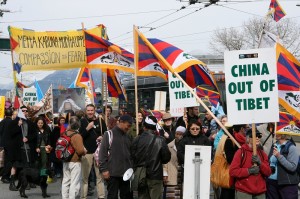 surrounding the Olympic torch relay, particularly in European cities such as Paris and London. Large crowds of people displayed banners and waved Tibetan flags while some attempted to extinguish the Olympic flame. This was in direct response to the reports of riots in and around the Tibetan Autonomous Region in March of that year. The riots were misreported by some parts of the media in the West (this was not helped by the Chinese authorities preventing many outlets from entering the territory) and so it is not fully understood that many of those that died were Han Chinese, killed or burned alive by Tibetan rioters. These acts, if carried out in a US domestic context, would have been labelled as terrorism. This reporting caused anger among many Chinese who cannot understand where the Western bias comes from and consider it to be simply “anti-Chinese”.
surrounding the Olympic torch relay, particularly in European cities such as Paris and London. Large crowds of people displayed banners and waved Tibetan flags while some attempted to extinguish the Olympic flame. This was in direct response to the reports of riots in and around the Tibetan Autonomous Region in March of that year. The riots were misreported by some parts of the media in the West (this was not helped by the Chinese authorities preventing many outlets from entering the territory) and so it is not fully understood that many of those that died were Han Chinese, killed or burned alive by Tibetan rioters. These acts, if carried out in a US domestic context, would have been labelled as terrorism. This reporting caused anger among many Chinese who cannot understand where the Western bias comes from and consider it to be simply “anti-Chinese”.
No country in the international system recognizes Tibet as an independent nation and all who have diplomatic relations with Beijing acknowledge Chinese sovereignty over the region (indeed, even those few countries that maintain diplomatic relations with Taipei instead consider it to be part of the Republic of China). The last country to fall into line and recognize Tibet formally as part of the PRC was the UK, which did so in 2008, blaming a bureaucratic oversight for not having done so previously. Even the Dalai Lama himself no longer calls for independence, but for “genuine autonomy” within the People’s Republic.
The Future of Tibet
The Tibet question is one that has shown no sign of simply going away. The Dalai Lama’s successful internationalization of the issue has made it infinitely more complex for the Chinese leadership to handle but their legitimate and rational security concerns, combined with the crucial issue of maintaining territorial integrity of the Chinese nation, mean that the Dalai’s wish for genuine autonomy is unlikely to be granted. The Chinese government, despite its intermittent negotiations with representatives of the Dalai (the last of which took place in 2008 prior to the riots), shows no intention of shifting position and appears to be playing a waiting game, apparently believing that Tibetan resistance will subside after the death of the fourteenth Dalai Lama. Having captured the Panchen Lama and appointed their own, they consider themselves to be in charge of the future of that particular institution. However, the Dalai himself has raised the possibility that a future reincarnation of himself may be born outside of Tibet (previously believed impossible) which might allow for a continuance of a government in exile that maintains some level of loyalty from the Tibetan people. Furthermore, he has already announced that he intends the position to be one only of religious leader and that the head of the Tibetan government should be democratically elected. Even without this, there is no guarantee that the Chinese waiting game will pay off in the long run; there is some evidence, particularly in the wake of the 2008 protests and the recent spate of self-immolations, that Tibetan youth is becoming radicalized in the face of an apparently immovable Chinese position, and without the calming influence of their spiritual leader it is possible that further violence might erupt.
China continues to focus on the economic development of Tibet, hoping that continued 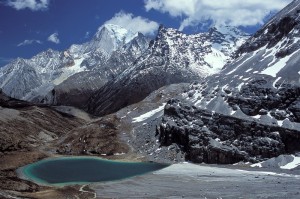 economic prosperity will help Tibetans feel more integrated into China. China has invested heavily in Tibetan roads, housing, schools and electrical grids so that it may feel the benefits of being part of China. Yet proposals that carry with them the prospect of greater prosperity, such as the proposal to extend the railway from Lhasa further into Tibet, are also viewed with suspicion by some Tibetans who fear that they are just another tool for the Chinese military to ensure control over the region is maintained. To assuage these fears, China needs to pay more attention to the legitimate complaints of Tibetans who feel that their culture and history is being destroyed. This loss cannot be compensated with the kind of economic progress that has, so far, satiated other parts of Chinese society.
economic prosperity will help Tibetans feel more integrated into China. China has invested heavily in Tibetan roads, housing, schools and electrical grids so that it may feel the benefits of being part of China. Yet proposals that carry with them the prospect of greater prosperity, such as the proposal to extend the railway from Lhasa further into Tibet, are also viewed with suspicion by some Tibetans who fear that they are just another tool for the Chinese military to ensure control over the region is maintained. To assuage these fears, China needs to pay more attention to the legitimate complaints of Tibetans who feel that their culture and history is being destroyed. This loss cannot be compensated with the kind of economic progress that has, so far, satiated other parts of Chinese society.

